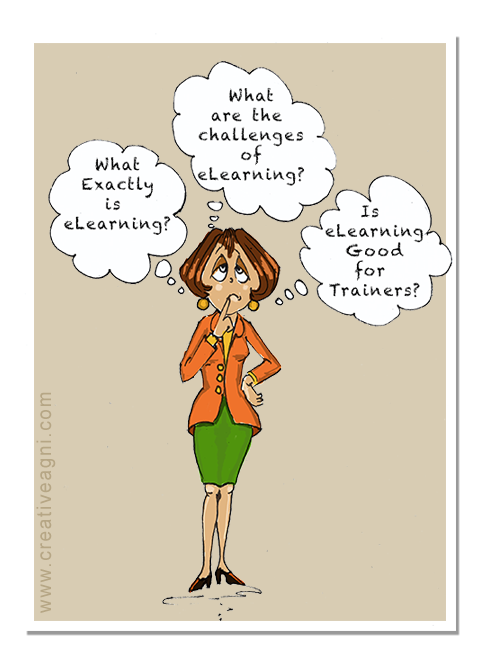
The Trainer's Rendezvous with eLearning(A Short Affair or a Long-lasting Relationship?)These are interesting times for everyone. The gales of change are hitting everyone and everything with equal ferocity. The climate, the flora and the fauna, the businesses, the economies, the political environment, everything is experiencing a never-before change. Though not as big as these other changes, there is yet another change, which is being experienced by the training community. This change is the recognition of eLearning as an effective “alternative/addition” to classroom training. The use of the term “alternative” is not inadvertent. It is important to remember that in some cases, organizations want to replace classroom training with eLearning too. It isn’t only about enhancing the training quality by using eLearning as an additional mode of imparting learning; it is also about using eLearning as an alternative to classroom training. This is so, because in the long run, eLearning is much more cost-effective. Quite like every change, this change too is facing resistance. As managers know, resistance to change isn’t only about attitudes and behavioral patterns; resistance to change also germinates from inadequate understanding and appreciation of the reason for change. This is also true for eLearning implementation in organizations. Not everyone is keen on eLearning. Some also think of it as a “computer substitute” for a trainer. Thus, the trainer as well as the trainee; both look at the implementation of eLearning as an undesirable change. My experience has taught me that change shouldn’t be resisted; it should be analyzed for its possible effects (both positive and negative) and then if needed, modified. Going by this philosophy, my intention now is to equip you with the information that can help you review this change constructively. Let us first look at eLearning to identify it correctly and then review its main strengths and weaknesses. What exactly is eLearning?ELearning can be understood as learning through electronic means. This definition should immediately classify both mobile learning and television learning as eLearning. However, I recommend that you don’t generalize in haste. Again, if you’ve been using PowerPoint presentations, you may be tempted to say that even PowerPoint presentations should be included in eLearning. Resist that temptation. eLearning happens when a learner learns by interacting with the computer directly. This doesn’t happen in the case of PowerPoint presentations…and so, if you are using PowerPoint presentations in your training programs, you cannot assert that you are using eLearning.
*m-learning is at times classified as eLearning, but often it is not. m-learning is created by adhering to principles that are somewhat different from eLearning (the screen space, the technological limitations, and the audience’s immediate environment and mental state are all quite different for m-learning than they are for eLearning.) Personally, I prefer to view it as a completely different learning medium that would require the instructional designer to work with a very different kind of mental framework. 4 Defining Characteristics of eLearningLet us review some features of eLearning, which are common to all types of eLearning content.
As a Trainer, you must often wonder...
Is it Good for Trainers? (The Advantages of eLearning)Let us take a quick look at the advantages of eLearning: Other than the biggest advantage (to the organization that implements eLearning,), which is that of reduced implementation costs, there are some other benefits that accrue directly to the trainer. Let us look at some of these.
Is it Bad for Trainers? (The Challenges of eLearning)Are there some disadvantages too? Will this acceptance cause you certain discomforts?
So it’s up to you. Do you want to look at these as opportunities or as disadvantages? But I fear....(A Trainer's Apprhensions)Are you afraid?
Change is something that scares us, because it introduces the risk factor – in form of the unknown. When we know a danger well, we can find ways to overcome it! When we’ve learned the protection mechanisms well, we aren’t afraid anymore. The risk of unknown makes us feel vulnerable – because we don’t know what weapons would be needed for protection. Thus, the first step towards eliminating your fear of eLearning is to know it. This small attempt would probably help you see how eLearning can make you a more effective trainer, and thus motivate you to explore it further. Explore it, acquire the new competencies, and march into the future with confidence! - Author: Shafali R. Anand
Read more Articles by Shafali:
|
|||
